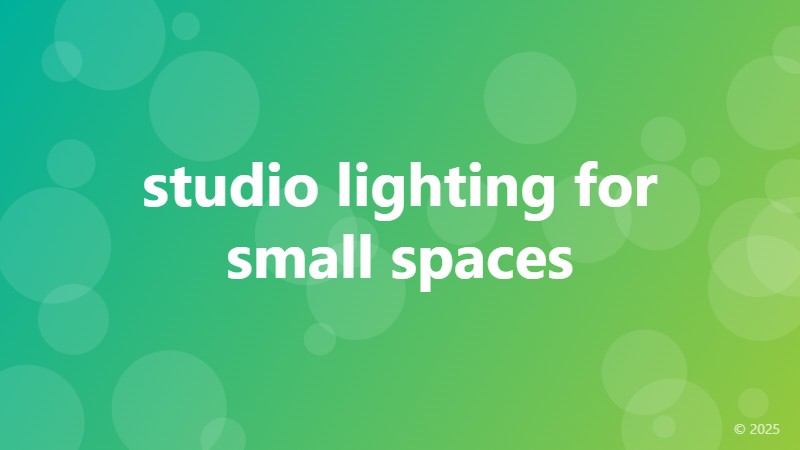studio lighting for small spaces

Studio Lighting for Small Spaces: Tips and Tricks
When it comes to studio lighting, many photographers and videographers assume that they need a large, sprawling space to achieve professional-looking results. However, with a little creativity and the right equipment, it's entirely possible to create a functional and effective studio lighting setup in even the smallest of spaces.
Understanding Your Space
Before you start shopping for lights and equipment, take some time to assess your space. Measure the dimensions of your room, and consider the color and type of walls, floor, and ceiling. This will help you determine the best placement for your lights and how to minimize any potential distractions or reflections.
Additionally, think about the type of photography or videography you'll be doing most often in your studio. If you'll be shooting portraits, for example, you may want to prioritize soft, flattering light. If you'll be shooting products or still life, you may want to focus on more dramatic, high-contrast lighting.
Choosing the Right Lights
When it comes to studio lighting for small spaces, it's essential to choose lights that are compact, versatile, and energy-efficient. Here are a few options to consider:
LED Lights: LED lights are a popular choice for small studios because they're compact, cool to the touch, and use very little power. They're also available in a range of colors and intensities, making them highly versatile.
Softbox Lights: Softbox lights are designed to produce soft, even lighting that's ideal for portraits and other applications where a natural, flattering light is desired. They're often compact and lightweight, making them easy to store and transport.
Ring Lights: Ring lights are a popular choice for photographers who specialize in macro or close-up photography. They're compact, easy to use, and provide a unique, circular catchlight in the subject's eyes.
Optimizing Your Lighting Setup
Once you have your lights, it's time to think about how to optimize your lighting setup for your small space. Here are a few tips to keep in mind:
Use Reflectors: Reflectors can help you make the most of your available light by bouncing it onto your subject from multiple angles. This can help create a more even, natural-looking lighting effect.
Experiment with Angles: Don't be afraid to experiment with different lighting angles and positions. This can help you create a more dynamic, interesting lighting effect, even in a small space.
Pay Attention to Backgrounds: In a small studio, backgrounds can quickly become cluttered and distracting. Use a plain colored background or a dedicated backdrop stand to keep your backgrounds simple and unobtrusive.
By following these tips and tricks, you can create a functional and effective studio lighting setup in even the smallest of spaces. Remember to stay flexible, experiment with different lighting options, and always keep your ultimate goal in mind: to create stunning, professional-looking images that showcase your unique perspective and style.